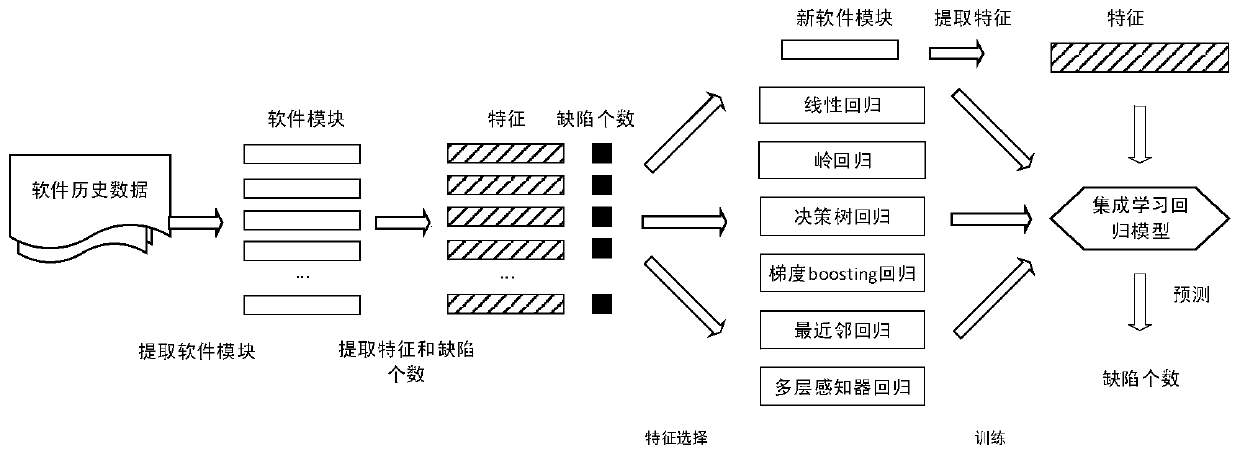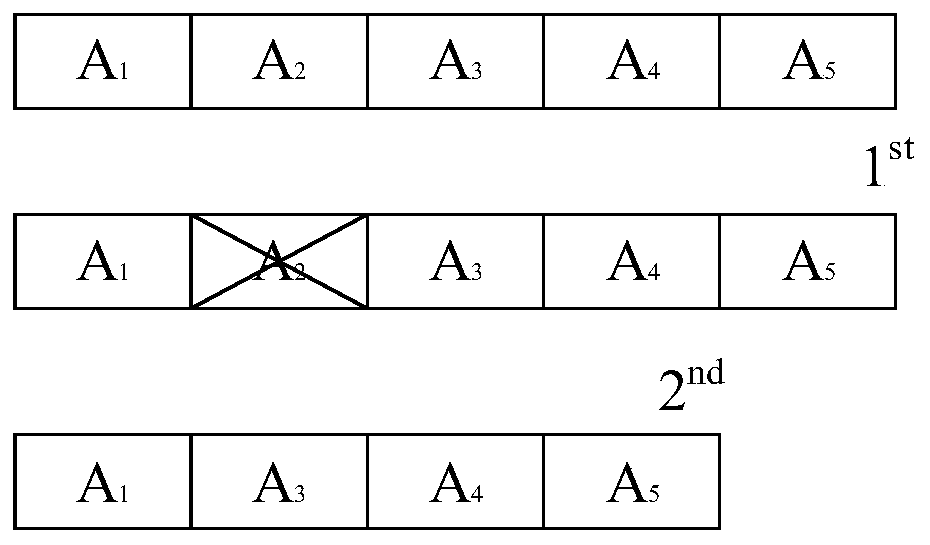A Method for Predicting the Number of Software Defects Based on Feature Selection and Ensemble Learning
A feature selection and software defect technology, applied in software testing/debugging, error detection/correction, electrical digital data processing, etc., can solve problems such as different algorithms, different prediction capabilities, irrelevant regression model performance, etc., to improve accuracy Effect
- Summary
- Abstract
- Description
- Claims
- Application Information
AI Technical Summary
Problems solved by technology
Method used
Image
Examples
Embodiment Construction
[0046] The flow chart of the method for predicting the number of software defects based on feature selection and integrated learning designed by the present invention is shown in the appendix figure 1 , all steps can be automatically run by those skilled in the art using computer software technology. The specific implementation process of the embodiment is as follows:
[0047] Step 1, mining software historical data, extracting n useful software modules from it. The granularity of software modules can be set as files, packages, classes or functions according to actual application scenarios. Then mark the number of defects in the software module.
[0048] Step 2, extract the attribute feature of software module, for the convenience of setting forth, assume that 5 attribute features are extracted in the embodiment: A 1 , A 2 , A 3 , A 4 , A 5 .
[0049] In this embodiment, the defect data set D={(x 1 ,y 1 ),(x 2 ,y 2 ),(x 3 ,y 3 ),(x 4 ,y 4 ),(x 5 ,y 5 )}, wher...
PUM
 Login to View More
Login to View More Abstract
Description
Claims
Application Information
 Login to View More
Login to View More - R&D
- Intellectual Property
- Life Sciences
- Materials
- Tech Scout
- Unparalleled Data Quality
- Higher Quality Content
- 60% Fewer Hallucinations
Browse by: Latest US Patents, China's latest patents, Technical Efficacy Thesaurus, Application Domain, Technology Topic, Popular Technical Reports.
© 2025 PatSnap. All rights reserved.Legal|Privacy policy|Modern Slavery Act Transparency Statement|Sitemap|About US| Contact US: help@patsnap.com



